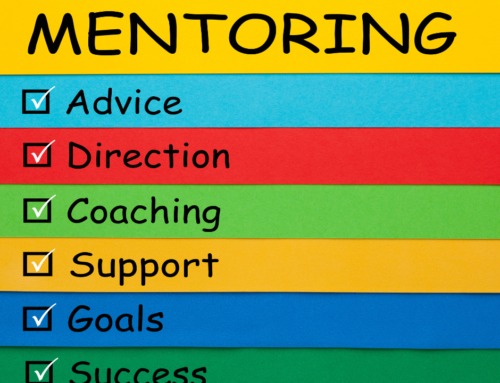How To Deal with Frustrated Clients or Customers
Although working with clients and customers can be rewarding and fulfilling, it does come with its fair share of challenges. For example, a frustrated client may say and behave toward you in unfair and unnecessary ways. How we deal with these circumstances daily impacts the customer, the organization, and most importantly, our well-being.
Key Ideas
One of the most difficult and stressful aspects of working in customer service is dealing with irate and uncooperative customers.
Although the customer isn’t necessarily “always right,” it is our job to convey a sense of understanding and desire to rectify a problem—regardless of how unpleasant a situation may feel.
Let’s focus on some key ideas we can all keep in mind when we find ourselves in these tricky situations—whether experiencing a difficult conversation on the phone or an actual confrontation with an angry person.
Be objective (don’t take it personally)
Objectivity is by no means the easiest thing to do, but it is essential to understand that 99% of the time, the customer is not angry with you.
There may be some unpleasant, hurtful words directed at you, but try to understand the client is upset with the situation and the company or organization that employs you—not you!
There is a good chance that the customer has experienced prior frustrations with your company or organization, and what you are witnessing results from a gradual build-up of negative experiences.
Or, they have just had a terrible day, and unfortunately, you are bearing the brunt of that. But, regardless, they are yelling at you and not saying the kindest things.
Understand that it is not about you; it’s about those many other things. Accepting this can help you remain more level-headed than the upset person you are dealing with.
Cooler heads prevail (remain calm)
Remaining calm when someone is yelling at you will ask your best from you. You may need to create an emotional fortress around you. But if you understand that the customer is not specifically angry with you, the chances are that you will remain calm.
- Listen to the person’s complaints carefully and analyze the situation.
- Take notes (if safe and appropriate to do so) and think about a solution.
- Try not to focus on the tone of voice or body language. Instead, pay attention to the information—this is what matters.
- Breathe deeply and just listen. Maintain a comfortable distance (physically and emotionally).
Apologies are necessary (and so is empathy)
Although likely, a confrontational situation with an unhappy client is not your fault; diplomacy is still your responsibility as you are the face of your organization at that moment.
You’re not necessarily apologizing for any mistakes (especially if there aren’t any), but you are showing the customer you regret that things have escalated to the degree they have.
Showing a little empathy—that you understand the situation is far from ideal, and you would have felt the same had the tables been turned- will go a long way in keeping an escalated situation from worsening.
There is an almost instant calming effect when frustrated clients see that they are being heard and understood.
Be patient (let the frustrated client vent)
Sometimes customers just want to be heard and have their feelings validated.
Remain quiet as they express their frustration—even if you feel like you are being personally attacked.
It might be helpful to take notes (if safe and appropriate) as this serves two purposes: it shows you taking what they express thoughtfully, and it will help you recall details of the situation if you need to follow up.
The situation is unlikely to improve if you interrupt and do not allow the customer to say what needs to be said.
Be patient and wait your turn. You’ll be glad you did.
Try to remain as fair and firm as you can
It’s important that you present yourself in a manner that conveys you are being fair but firm.
I don’t mean to imply that you should be cold or unwilling to compromise, but rather that you are committed to resolving the situation objectively and fairly.
- Be clear with your language and intentions. You want to be as decisive as possible and show the client you are committed to resolving the situation.
- Avoid the appearance of not having a good handle on the situation (even if you do not feel entirely confident about your next steps).
- An upset or angry client may be looking for things to pick apart, and if you are conveying a sense of uncertainty, it may only worsen their sense of frustration.
Never say this to a frustrated client or customer
Do NOT say:
- “Calm down!”
- “….or else!”
- “Come here!”
- “You can’t do that!”
- “Why did you do that?”
- “What’s the matter with you?”
I am sure, like me, when you read these (or say them out loud to yourself) they have the effect of wanting you to do the exact opposite. So, don’t say any of them. Ever.
Fix the problem (where is the solution?)
Once you’ve heard the customer and have a good sense you’ve understood the problem (you should confirm this by using Active Listening techniques) and the next steps needed to resolve it, propose the solution.
There may be several options, and you may not be able to resolve the situation that same day. But showing that you have ideas about alternatives to solve the problem, and that you are looking for a way to restore the client’s confidence, is the goal.
- Carefully outline what the solution is
- Break it down and show the process. Then, if you are permitted, give the client your contact information and try to appease their frustration by confirming you will follow up on a specific day.
- Is there a temporary solution until a more permanent one is possible?
Try to find an effective remedy that is good for the frustrated client or customer. Even if it’s only the start of a remedy process you will show commitment to resolving the situation and demonstrate that you and your organization care. It is the only way.
Lots more ideas are coming your way in future posts. But we are off to a good start!






